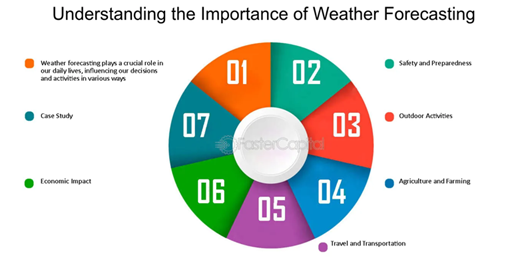AI-Based Weather Prediction

DOI:
https://doi.org/10.54060/a2zjournals.jase.104Keywords:
AI-driven forecasting , Climate physics models , Numerical weather predictionAbstract
Weather prediction has always been challenging because the atmosphere is complex and constantly changing. Traditional methods use physics-based models that rely on mathematical equations to predict how the weather will evolve. However, these models take long time to run and have uncertainties, the results are not very efficient and accurate.
Now, Artificial Intelligence (AI) is helping improve weather forecasting (AI-driven forecasting). AI can quickly analyse huge amounts of weather data from satellites, weather stations, and radars. It learns patterns from past weather events and makes predictions faster and more accurately than 7traditional models.
- Artificial Intelligence (AI)
- Machine learning (ML) (particularly)
- Deep learning (DL)
These are really helpful in revolutionizing weather forecasting by improving accuracy, reducing computational costs, and enabling real-time predictions.
Accurate weather prediction is essential for disaster preparedness, agriculture, and climate research. AI-based weather prediction offers a promising solution by integrating deep learning techniques with physics-based models to enhance forecast accuracy and efficiency. This paper explores hybrid approaches that combine machine learning with fundamental atmospheric equations to improve weather predictions. We discuss advancements in AI-driven parameterization, and uncertainty reduction, highlighting their potential to revolutionize meteorology.
The findings indicate that AI-augmented climate models can significantly improve forecasting capabilities, paving the way for more accurate and efficient weather prediction systems.
Downloads
References
R. Lam, Graph-Cast: Learning skilful medium-range global weather forecasting. DOI- https://arxiv.org/abs/2310.08210
M. Lagerquist, A. Mcgovern, and D. Gagne, “Deep learning for real-time pre-dictions of damaging convective winds,” Weather and Forecasting, vol. 35, pp. 627–646, 2020.
M. Raissi, P. Perdikaris, and G. E. Karniadakis, “Physics-informed neural net-works: A deep learning framework for solving forward and inverse problems involving nonlinear partial differential equations,” Journal of Computational physics. DOI: https://doi.org/10.1016/j.jcp.2018.10.045
J. Boukabara, “AI and machine learning for weather and climate: Appli-cations, challenges, and next steps,” Bulletin of the American Meteorological Society. DOI: https://doi.org/10.1175/BAMS-D-21-0229.1
S.-A. Boukabara, V. Krasnopolsky, J. Q. Stewart, E. Maddy, N. Shahroudi, and R. N. Hoffman, “Realizing the benefits of AI across the numerical weather prediction value chain,” Bull. Am. Meteorol. Soc., vol. 101, no. 1, pp. 29–33, 2020. DOI- https://doi.org/10.1175/BAMS-D-18-0324.A.
N. Cedric, “AI-Powered Weather System with Disaster Prediction,” International Journal of Advanced Research in Science, Communication and Technology, 2024. DOI- https://doi.org/10.48175/ijarsct-22611.
G. K. Rahul, S. Singh, and S. Dubey, “Weather forecasting using artificial neural networks,” in 2020 8th International Conference on Reliability, Infocom Technologies and Optimization (Trends and Future Directions) (ICRITO), 2020. DOI- https://doi.org/10.1109/ICRITO48877.2020.9197993.
D. Mukashev, G. Abitova, G. Uskenbayeva, A. Shaikhanova, “Weather Prediction with Artificial Intelligence in Meteorology” 2024. DOI- https://doi.org/10.52167/1609-1817-2024-130-1-414-425

Downloads
Published
How to Cite
CITATION COUNT
Issue
Section
License
Copyright (c) 2025 Shantanu Dubey

This work is licensed under a Creative Commons Attribution 4.0 International License.



























